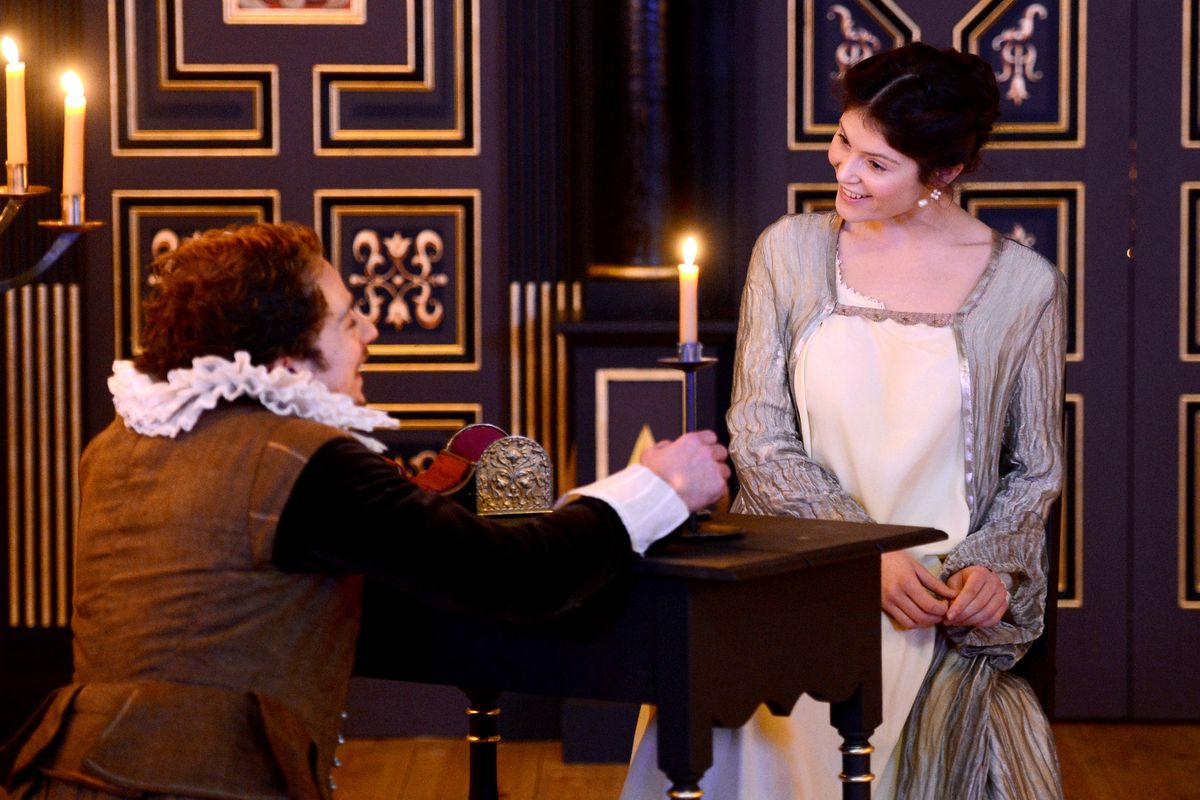The Duchess of Malfi at the Sam Wanamaker misses the mark of Webster’s beautiful tragedy: Theatre review

The cast of The Duchess of Malfi
|GETTY
John Webster’s Renaissance tragedy The Duchess of Malfi has had a renaissance of its own over the past few years
Don't Miss
Most Read
Maria Aberg’s production at the RSC in 2018 wrote its way into the history books owing to the gallons of ‘blood’ violently splashed across the stage each night.
Webster’s play was also staged at the Sam Wanamaker Playhouse 10 years ago to mark the venue’s opening season - Gemma Arterton took on the leading role and received heaps of critical praise.
Now, a decade on, Webster’s tale of class and greed returns to this spectacular indoor space nestled inside Shakespeare’s Globe, in a version that gets close to, but ultimately misses, the emotion imbued into the drama.
Undoubtedly, this was a modern refresh of Webster’s original text. As a widow, the Duchess of Malfi finds herself in a vulnerable but powerful social position at the start of the play; she is seemingly a single woman in control, and yet it becomes clear that her brothers and society at large are, indeed, in control of her.
What unravels is a story that reveals how class pervades every human relationship, for good or for bad. Director Rachel Bagshaw and dramaturg Zoe Svendsen built-in quips about botox and collagen - as well as some very 21st-century swear words - which, alongside costuming, firmly uprooted this Renaissance tragedy to today’s socio-political landscape.
Thinking about the actual text of the play was only ever sharpened by Ti Green’s set and lighting design which projected the script of the play onto the backdrop of the Sam Wanamaker stage.

Gemma Arterton led the show 10 years ago
|GETTY
What Bagshaw’s interpretation seemed to want to convey the most was the misogyny that lies at the heart of the Malfi court. Indeed, this certainly exists. But what makes it sing so strongly in Webster’s original tragedy is how it is continually threaded through the words and language of the play.
This production wasn’t convincing in fully putting this theme at the forefront - it seemed to come in bursts, initially in the very banter-esque, laddish scene between Ferdinand and Bosola (something very much expanded from Webster’s script) and then in the Duchess’ madness scene in Act Four.
Here, the ‘madmen’ that Ferdinand sends to torture his sister all appeared in masks, before they dramatically removed them to reveal very unassuming, normally clad men, making the point that misogyny exists in plain sight. Also in this scene, the textual projection that runs throughout Bagshaw’s take on Malfi displayed a vivid array of classic misogynistic slurs all visually distorted and overlapping.
There was a palpable shift in mode here - as in Webster’s text, this successfully felt like an isolated, controlled scene that sits separately from the narrative overall. Despite the force of this one individual scene, though, misogyny in Malfi wasn’t pushed through to its full significance.
Looking at individual performances, Francesca Mills as The Duchess really did shine.
Mills modulated perfectly between stunning regality and power, and the tender, caring mother and wife that makes up the Duchess’ complex personality.
Elsewhere, Oliver Johnstone was convincing as Ferdinand, although perhaps not quite as menacing or mad as Webster writes.
The same can be said for Jamie Ballard’s take on the Cardinal. Webster emphasises just how malicious and evil he is, and yet Ballard seemed a little flat at times.
More than anything, though, there was an overriding sense of imbalance throughout this take on The Duchess of Malfi. Humour, music and colour were injected into nearly every scene - of course, this worked very well at points, exacerbating the light and shade of Renaissance tragedy. There is no disputing that Webster’s play has a great capacity for fun; the relationship between Julia and the Cardinal, for instance, or the fate of Count Malateste provide opportunities for a laugh.
LATEST DEVELOPMENTS:

Lydia Wilson, Shalini Peiris and Ioanna Kimbook at the Duchess of Malfi press night
|GETTY
And yet there was a certain gaudiness, a certain silliness in this production that slightly cheapened Webster’s work.
The shrill saxophone coupled with sparkly, colourful costumes just felt too much at odds with the simple beauty of Malfi’s narrative. This is a story of such heartbreaking betrayal, love, and loss which appeared tarnished through so many additions and edits.
Despite these issues of imbalance, two scenes really stood out - mostly because of how well-suited the Sam Wanamaker space was to these specific moments. There is such a big focus on intimacy in Malfi; disease and contagion are driving metaphors for Webster, and there are constant hints at how Ferdinand harbours an incestuous passion for his twin sister.
That the Sam Wanamaker is so small and candlelit emphasises these themes when you are squeezed up against fellow audience members. Poison - both metaphorical and literal for Webster - spreads like wildfire when everyone is in such close proximity, as the small theatre helped to reflect the early modern anxieties that are at the heart of the play.
Because of this, the bedroom scene in Act Three was exceptionally done; this is when Ferdinand infiltrates the Duchess’ locked chamber. Another very well-executed scene was from Act Four, when Ferdinand and the Duchess have another meeting in her home, this time in complete darkness.
Again, the candlelit Sam Wanamaker lent itself beautifully to this moment, as the candles were extinguished, leaving the room completely pitch black. This felt like an authentic Renaissance theatre-going moment which was a treat in a production that was continually so distant from the period it originates from.
The Duchess of Malfi plays at the Sam Wanamaker Playhouse until 14th April - get tickets here: https://www.shakespearesglobe.com/whats-on/the-duc...










